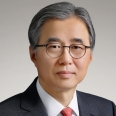*This is an opinion expressed in the Chosun Ilbo Op-ed on June 21, 2022.
At the Korea-US summit in May, President Biden affirmed the “U.S. extended deterrence commitment to the ROK using the full range of U.S. defense capabilities” and made clear the principle of “nuclear response to nuclear threat.” And yet there is something we need to do.
For the U.S. extended deterrence to work, North Korea must recognize properly our capacity to respond. However, North Korea fired three missiles just before the end of President Biden’s trip to South Korea and Japan. It also fired eight rounds of short-range ballistic missiles in early June, shortly after the ROK-U.S. naval exercise. It means that, despite the U.S. commitment to extended deterrence, North Korea sent a message that its nuclear threats against South Korea will intensify in the future.
North Korea seems to think that if it enhances its nuclear capability, the U.S. may not implement the ‘nuclear-to-nuclear’ principle. We can deny North Korea’s nuclear threat by making them recognize that their miscalculation will bring its own destruction.
Although the Yoon Suk-yeol administration is making efforts to secure the existing “three-axis” defense system early in order to deter North Korea’s nuclear threats, since nuclear weapons have not only military effects but also political and psychological power, deterring them through conventional weapons has limited effect.
The security situation on the Korean Peninsula, where North Korea advances its nuclear and missile capabilities, is similar to that of Europe during the Cold War period. When the Soviet Union threatened to use nuclear missiles against the U.S. mainland as well as Western Europe by launching a Sputnik satellite in the late 1950s, European countries fell into serious security anxiety. The United States deployed more than 7,000 tactical nuclear weapons of various types in Europe, and European countries have become convinced that nuclear weapons are both American assets and European weapons. There are still more than 150 U.S. tactical nuclear weapons in Europe.
Despite increasing North Korea’s nuclear threats, the U.S. is still passive in introducing tactical nuclear weapons on the Korean Peninsula. It does not make sense that the deployment of tactical nuclear weapons is possible in Europe but not on the Korean Peninsula. Just before the disintegration of the Soviet Union in 1991, with the agreement between President H.W. Bush and President Mikhail Gorbachev, the Soviet Union withdrew 10,000 tactical nuclear weapons deployed in countries of the Commonwealth of Independent States (CIS), including Kazakhstan, Belarus, and Uzbekistan, while the U.S. withdrew around 6,000 tactical nuclear weapons deployed in the Western Pacific, including hundreds of those in South Korea. Unlike then, North Korea’s nuclear armament has become reality, and at least some of these must be reintroduced.
Although the use of nuclear weapons from outside the Korean Peninsula may also be considered, this has weaknesses in terms of response time. It takes 30 minutes for missiles and 10 hours for strategic bombers to mobilize strategic nuclear weapons deployed in the U.S. mainland. It takes two to three hours to use strategic bombers deployed in areas surrounding the Korean Peninsula, such as Guam and Okinawa. One might also consider firing nuclear weapons using 20 U.S. nuclear submarines deployed in the Western Pacific, but it also takes more than 10 minutes. Compared to these options, if we deploy tactical nuclear weapons on the Korean Peninsula, once we detect North Korea’s intention to use nuclear weapons, we could launch a preemptive strike. In this way, a “balance of terror” can be achieved and we will be able to deter North Korea’s provocations.
Some argue that relocating tactical nuclear weapons would mean giving up the denuclearization of North Korea, but the opposite is true. The Intermediate-Range Nuclear Forces (INF) Treaty in Europe was possible because the United States deployed Pershing II missiles against the Soviet SS-20. If we deploy tactical nuclear weapons on the Korean Peninsula, we can pressure Pyongyang with tactical nuclear weapons to give up its nuclear weapons.
Until now, the redeployment of U.S. tactical nuclear weapons on the Korean Peninsula has been treated as an unlikely alternative. However, a change in public opinion in the United States on this issue has been registered. At the Symposium held on the theme “Celebrating Korea-U.S. Relations: 140 Years and Beyond,” co-hosted by the Asan Institute for Policy Studies and the U.S. Embassy in Korea in early June, U.S. participants, including Dr. Edwin Feulner of the Heritage Foundation, said that South Korea and the U.S. should not rule out alternatives such as deploying tactical nuclear weapons in South Korea in order to send a clear warning about North Korea’s nuclear threat. That was a different atmosphere from the past. In 2021, General Scaparrotti, who served as the Commander of the U.S. Forces in Korea and NATO forces, also proposed the creation of an Asian version of the Nuclear Planning Group (NPG) involving South Korea, Australia and Japan.
In a 2021 poll conducted by the Chicago Council on Global Affairs, 56% of Koreans supported the deployment of tactical nuclear weapons. In a 2022 poll conducted by the Asan Institute for Policy Studies, 59% of Koreans supported this while 70.2% supported the development of our own nuclear weapons. The South Korea’s development of nuclear weapons is politically more difficult than the deployment of U.S. tactical nuclear weapons, but that more people support it than tactical nuclear relocation indicates that South Korean public wants a credible countermeasure against North Korean nuclear threat.
The newly inaugurated Yoon Suk-yeol administration has set the denuclearization of North Korea and the normalization of inter-Korean relations as key tasks in its North Korea policy. The first step would be to correct Pyongyang’s false conviction by deploying tactical nuclear weapons and showing them that we will respond to their nuclear weapons with nuclear weapons.
* The view expressed herein does not necessarily reflect the views of the Asan Institute for Policy Studies.

 Facebook
Facebook Twitter
Twitter